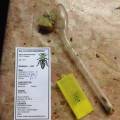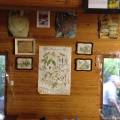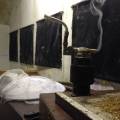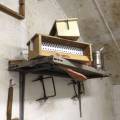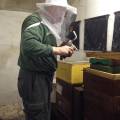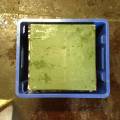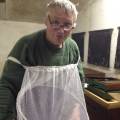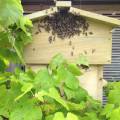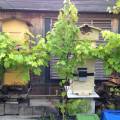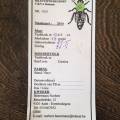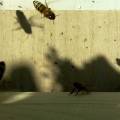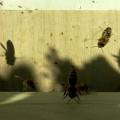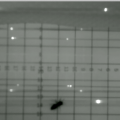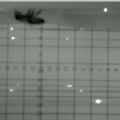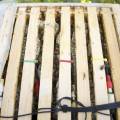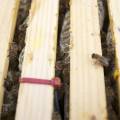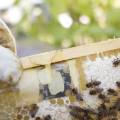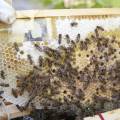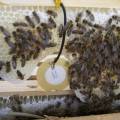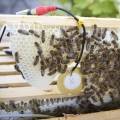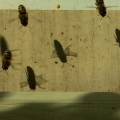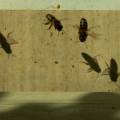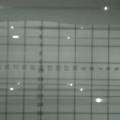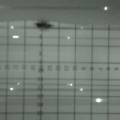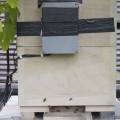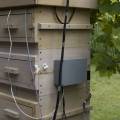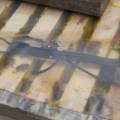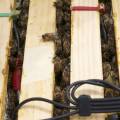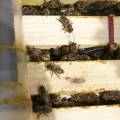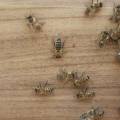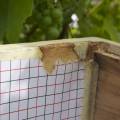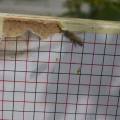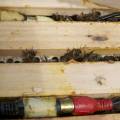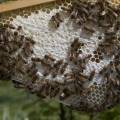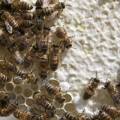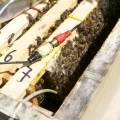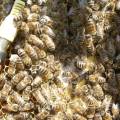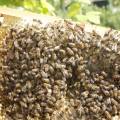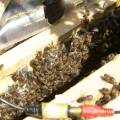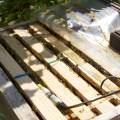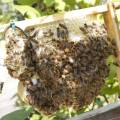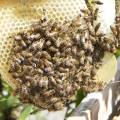This is an old revision of the document!
bringing in the bees
http://pandora.okno.be/PE/editor/00:00:15.160,00:00:00.520,00:00:15.160
http://pandora.okno.be/PF/editor/00:00:14.160,00:00:00.320,00:00:14.160
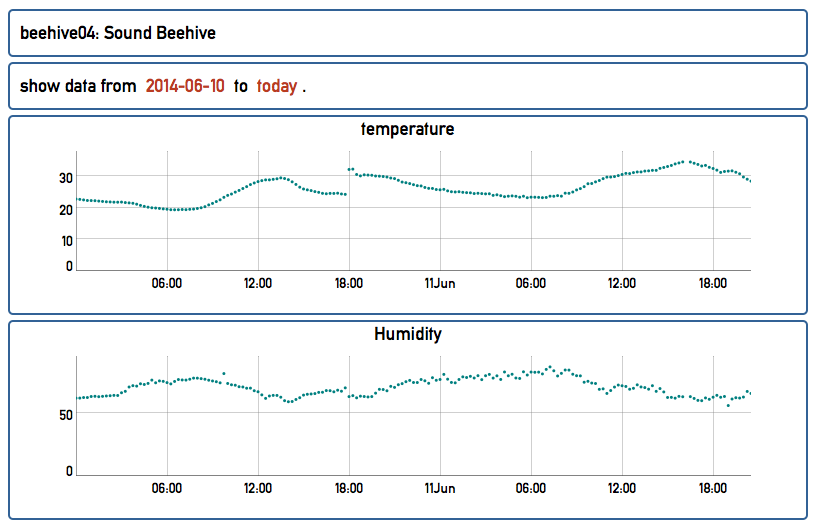
Tuesday june 10, 2014: arrival of the bees - filmed at 6pm: bees scouting their new environment.
Wednesday, june 11: bees inspecting their new environment.
These images are filmed with the PiNoir camera from Raspberry Pi, inside the Warré beehive. The hive is lit by 2 infrared leds, synchronised with the recording timings. The bees are fresh in the hive, they are discovering and inspecting their new home. The image is not completely sharp, due to poor light circumstances.
http://pandora.okno.be/PE/editor/00:03:34,00:00:04.040,00:03:34 ⇒ filmed inside the beehive
http://pandora.okno.be/UA/editor/00:01:50.680,00:00:00,00:02:59 ⇒ filmed outside the beehive
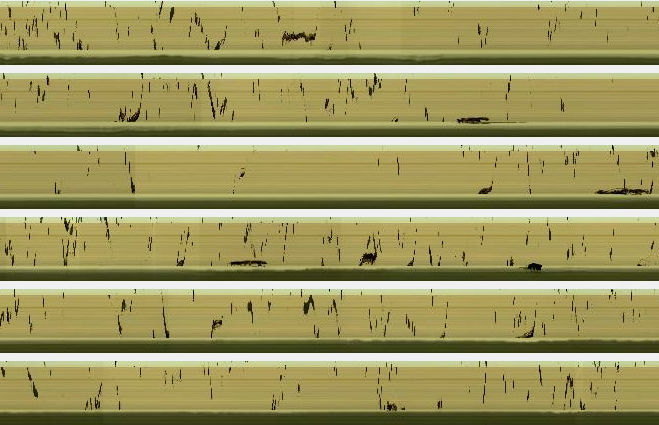
29/06/2014. First inspection of the sound beehive, after 2 weeks of introduction of the colony. The colony does not develop as fast as I as hoping. Maybe something is wrong. I can only do another close inspection on monday 7/7. In the meantime I feed the workers with a 1/1 sugar solution, to support them with finding food.
14/07/2014 : the second inspection of the sound beehive colony. After Bologna, Barcelona and Nantes I was a bit afraid to open the hive, as I suspected to find an underdeveloped colony. But no way! Altough that there's not yet that much activity at the flighthole, the colony inside the hive is super well developed. The 6 middle frames are completely build out, and the 2 outer frames are nearly completed. The bees build wax around all piezo's. Piezo 8 (most right from standing behind the hive) is completely covered, as well as piezo's 6 and 7. Piezo 5 (utmost left) is half covered. I think that, in a week or 3, the bees will move downwards. Just enough time to improve our PiNoir camera setup.
But alltogether you can clearly see that a honeybee colony in a Warré beehive develops at its own pace, which is slower than in a 'commercial' beehive as Dadant Blatt or Langstroth or Kempisch … It is a good observation tool to work towards a complete natural beehive - we'll check out what the season will bring further …
http://pandora.okno.be/UC/editor/00:01:45,00:00:51,00:01:56
Definition for 2 master thesis projects at the VUB-AI lab under supervision of Prof. Bart de Boer:
1)We have recently started recording large amounts of data from a beehive in Brussels in order to investigate whether we can detect patterns in this data that help us to both monitor the environment and the bee colony’s health. The aim of the research is twofold: to investigate whether we can use the bees as remote environmental sensors and to investigate whether, through monitoring the colony’s behavior, we can get advance warning of problems that may cause colony collapse.
In order to do this we need to solve a number of challenging computer science problems.
This project has the deceptively simple aim of counting the number of bees that pass through the image of a video camera that films the entrance of a bee hive. The number of bees that passes the entrance per unit time is an important indicator of the activity of a bee colony. The student is encouraged to solve this problem, for instance visual flow or feature-based approaches. However, it is important that the method is robust: it should work in any lighting condition (including ones where bees cast shadows) and even when bees collapse, or turn upside-down (which they do surprisingly often). The student should develop and fine tune their model using one subset of the available video recordings, and test its performance on different subsets. The performance will need to be compared to numbers established by counting manually.
2)A second project aims to investigate, using data mining and signal processing techniques in what way environmental data (temperature, humidity, time of day, environmental noise) relates to and predicts data recorded from within the hive (sounds and temperature). This is a challenging problem, as there are large amounts of real-world noisy data, in which the patterns may not be stable over time (after all the bees’ behavior changes with the season).
The student will need to apply signal processing techniques (these can be from a library) to mine for patterns selection of the recordings. Any techniques may be used here, but statistical machine learning techniques are probably most promising. When candidate patterns are found, these need to be tested with different selections of the recording in order to prevent spurious patterns from being found.

